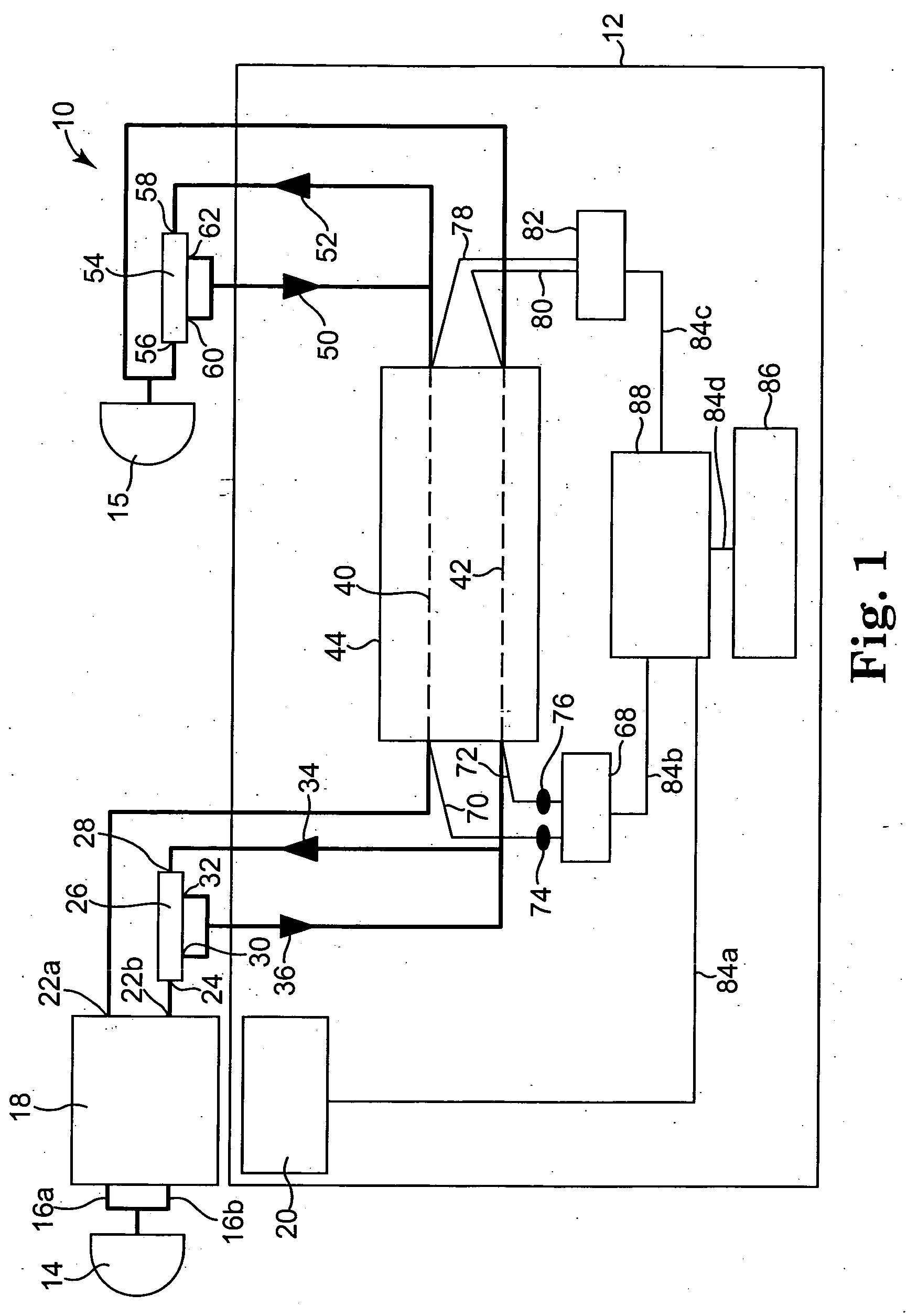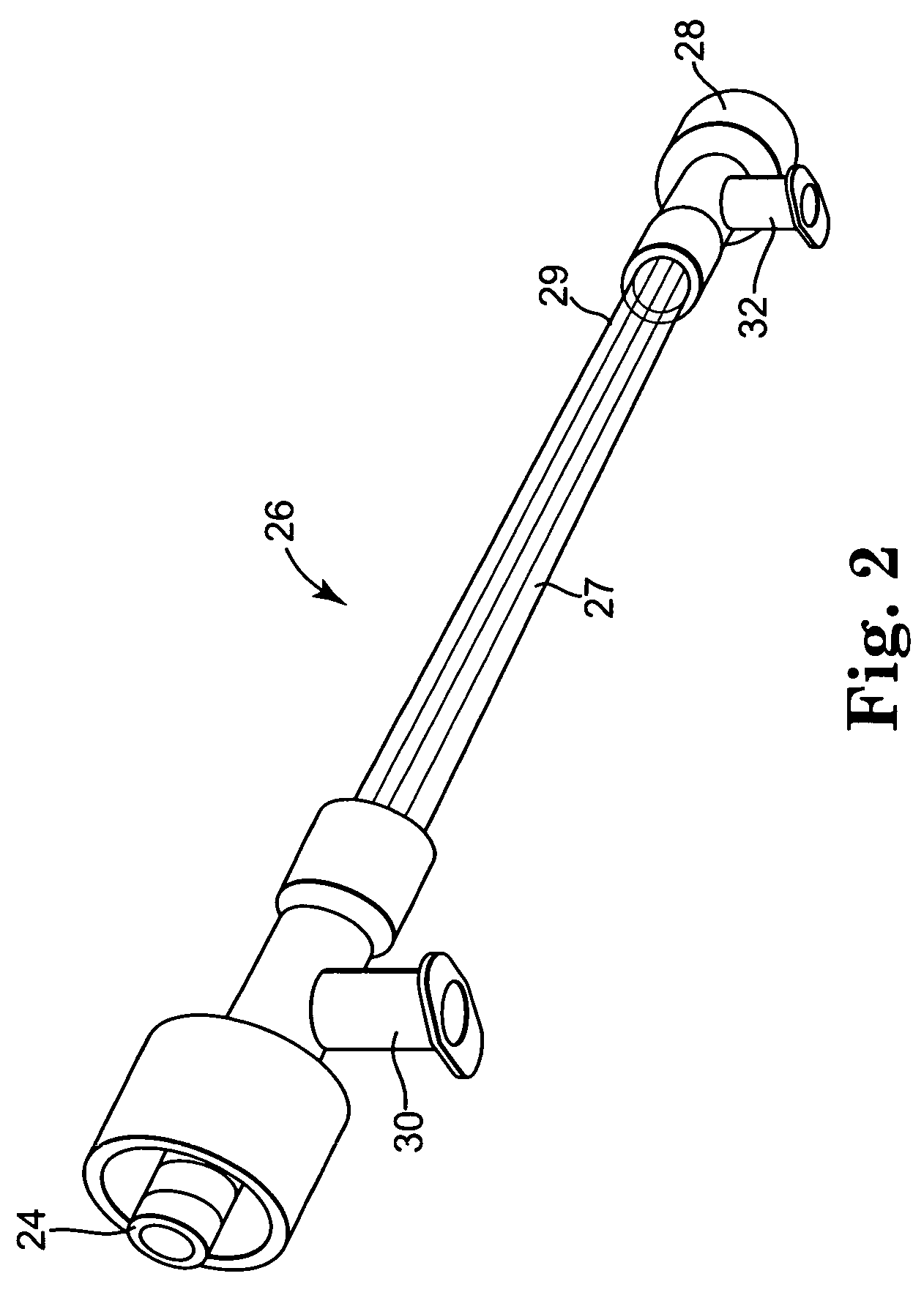Optical phytoplankton discriminator
a phytoplankton discriminator and optical technology, applied in the direction of optical radiation measurement, instruments, spectrometry/spectrophotometry/monochromators, etc., can solve the problem that the analytical device and its associated components may require frequent cleaning, and achieve the effect of reducing gaps in the data record
- Summary
- Abstract
- Description
- Claims
- Application Information
AI Technical Summary
Benefits of technology
Problems solved by technology
Method used
Image
Examples
Embodiment Construction
[0031] Referring to FIG. 1, Optical Phytoplankton Discriminator apparatus 10 includes instrument housing 12 containing most of the components in the apparatus. Several components that may need more frequent cleaning or replacement are located outside housing 12. Liquids enter and leave apparatus 10 via first bidirectional port 14 and second bidirectional port 15. Port 14 is connected via suitable diameter tubing (e.g., 0.5 mm inside diameter tubing) and a suitable tubing wye to fittings 16a and 16b of dual channel bidirectional gear pump 18 and thence through fittings 22a and 22b to the remaining liquid circuits in apparatus 10. Pump 18 contains three planetary mesh gears (not shown in FIG. 1) arranged so that a central drive gear drives a first orbital gear that moves liquid in a first pump channel between fitting 16a and fitting 22a, and drives a second orbital gear that moves liquid (flowing in the opposite direction through pump 18) in a second pump channel between fitting 16b a...
PUM
 Login to View More
Login to View More Abstract
Description
Claims
Application Information
 Login to View More
Login to View More - R&D
- Intellectual Property
- Life Sciences
- Materials
- Tech Scout
- Unparalleled Data Quality
- Higher Quality Content
- 60% Fewer Hallucinations
Browse by: Latest US Patents, China's latest patents, Technical Efficacy Thesaurus, Application Domain, Technology Topic, Popular Technical Reports.
© 2025 PatSnap. All rights reserved.Legal|Privacy policy|Modern Slavery Act Transparency Statement|Sitemap|About US| Contact US: help@patsnap.com



